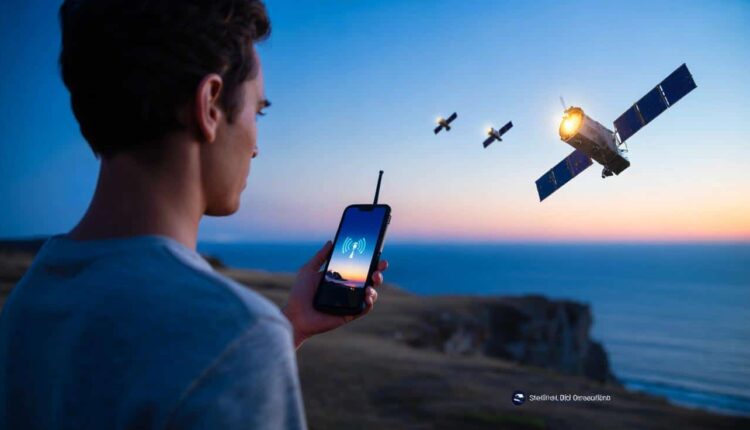Starlink Launches Satellite-to-Mobile Service: No Installation, No New Phone Required
Starlink has officially activated its direct-to-cell satellite service, allowing ordinary 4G smartphones to send text messages using satellite connectivity—no special hardware, apps, or new devices needed. The rollout marks a major step toward eliminating mobile dead zones by delivering baseline connectivity directly from space.
The service, launching in partnership with mobile operators across several countries, aims to provide coverage in areas where traditional networks fail, including remote regions, coastlines, and disaster zones where cell towers are down.
How It Works
The new Starlink satellites function like mobile cell towers in low-Earth orbit. They broadcast a standard 4G LTE signal on spectrum provided by partner carriers. When a phone cannot connect to a terrestrial tower, it automatically attaches to the satellite cell with no user intervention.
Although the connection is slower than ground networks, it is reliable enough for emergency communication and essential messaging.
Compatible Phones
Most modern 4G smartphones—including iPhones from the 6s upward, Samsung Galaxy models from the S8, Google Pixel 3 and above, and many mid-range Android devices—can connect automatically. If a device already supports regular LTE calls and SMS on its carrier, it supports satellite messaging.
Rollout Timeline
Mid-2025: Text messaging goes live in regions where regulatory and spectrum approvals are complete.
2026: Voice calls and basic data services are planned, with capacity improving as more satellites launch.
Early partners include T-Mobile (US), Optus (Australia), Rogers (Canada), and several European operators.
What to Expect
- Text-only at launch
- Best performance outdoors with clear sky view
- Limited capacity intended for essential communication, not heavy browsing or streaming
- Service availability depends on your mobile operator
Real-World Uses
The technology promises improved safety and coordination for hikers, farmers, sailors, and workers in remote areas. It also strengthens emergency response capabilities during floods, wildfires, or storms that knock out cell towers.
Costs, Speed and Battery
Pricing will vary by carrier. Some may include satellite texting in premium plans; others may charge per message or offer it as an add-on. Latency is higher than normal mobile service, but still acceptable for SMS. Battery use may increase slightly when the device struggles to lock onto a weak signal.
Preparing Your Phone
Users are advised to keep their software updated, confirm with their carrier that satellite service is activated, and prepare essential “quick message” templates for emergencies.
What’s Next
Starlink plans to expand its satellite fleet through 2026 to enable broader coverage and better performance. Voice, data, and support for small attachments are expected in the next phase, enhancing off-grid navigation, weather updates, and basic app connectivity.
The service positions satellite mobile as a safety net—filling the gaps left by terrestrial networks rather than replacing them.


